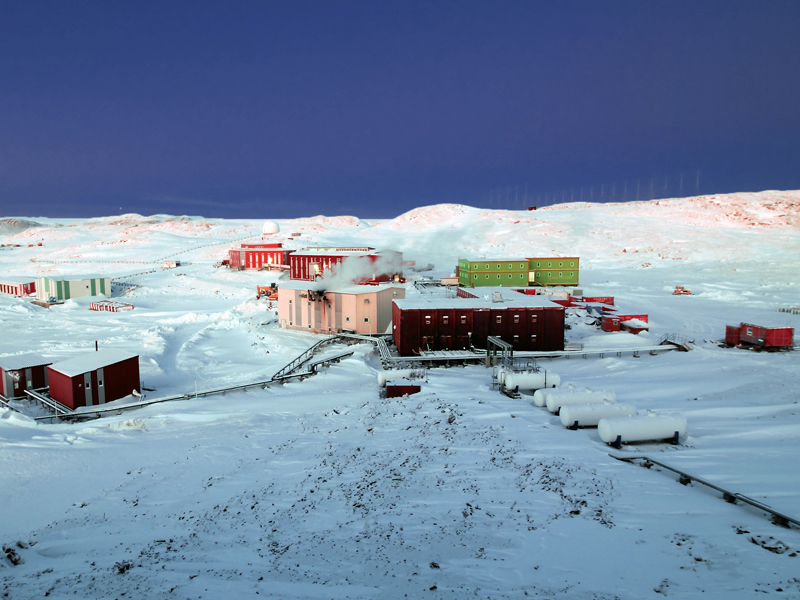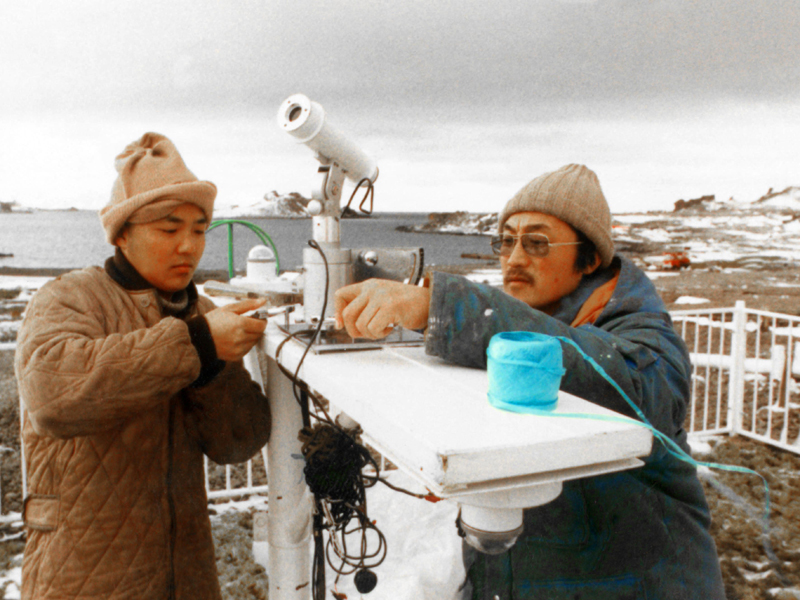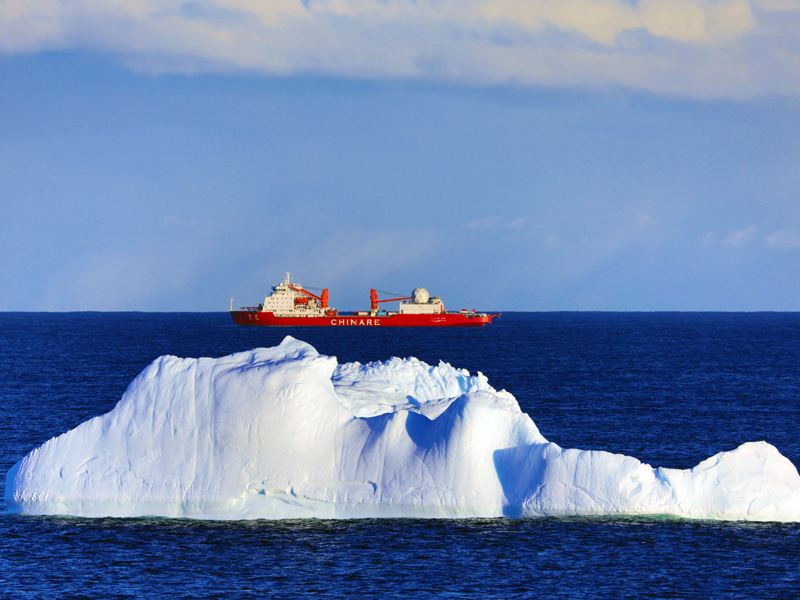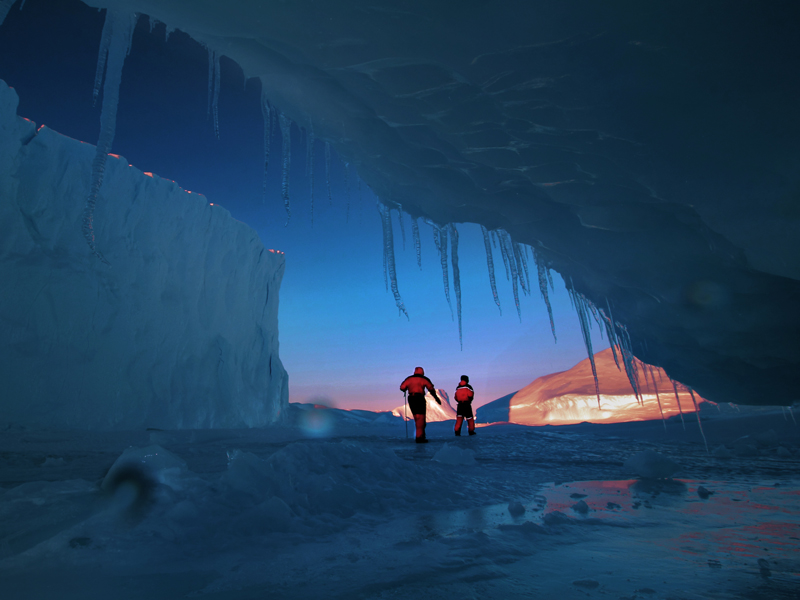Antarctic Activities of China

Remote and mysterious, Antarctica is the last terrestrial frontier on the planet. In 1958, Scientific Committee on Antarctic Research was founded, involving twelve nations actively engaged in Antarctic research and in 1959 they signed the Antarctic Treaty, to which China was admitted in 1983. And in 1985, China became one of the member countries of the treaty.
From May 23 to June 1, 2017, the 40th Antarctic Treaty Consultative Meeting was held in China, the first time the event has happened in the country. Just before the meeting, the State Oceanic Administration of China issued a report China’s Antarctic Activities, reviewing over three decades and demonstrating the vision in future.
“China has accomplished brilliant achievements in Antarctic activities over the last 30 years,” says Xu Shijie, one author of the report with State Oceanic Administration of China. “People around the world began to pay attention to China’s activities there, resulting in some speculation. Some think we intend to plunder resources, some think we want to increase our military presence and some posit a special strategic purpose. We wanted to communicate China’s stance, goals and vision, so we issued this report.”

Two technicians adjust instruments. In the 1980s, China started its Antarctic studies.
Antarctic Expeditions
According to the report, China’s Antarctic expeditions commenced around 1980, the dawn of the “warming-up phase” (1980-2000), which preceded the booming phase (2001-2015). In 1985, the Changcheng (Great Wall) Station, China’s first permanent station, was built on George King Island in west Antarctica. Since then, China has successively built Zhongshan Station, Kunlun Station and Taishan Campsite. China has mounted 33 Antarctic expeditions including multi-disciplinary scientific surveys in geosciences, life sciences and astronomy. Moreover, China has established a national Antarctic observation network combining air, shore, vessel, sea, ice and seabed-based infrastructure, which satisfies the basic demand of logistic support for Antarctic expeditions.
“In the first two decades, China’s activities in Antarctic focused on scientific studies,” says Xu Shijie. “According to incomplete statistics, funding input from 2001-2016 totaled 310 million yuan, 18 times as much as the 1985-2000 period. Over the last decade, thanks to technological advancements, transportation developments and the increased incomes of Chinese people, more Chinese tourists have set foot on Antarctica and China has become more active on the continent.”
According to the report, China commenced Antarctic krill fishing in 2009, and its average annual harvest had reached 30,000 tons by the end of November 2016. And the International Association of Antarctic Tour Operators reported that the total volume of Chinese tourists to Antarctica was 4,096 in 2015 and 5,286 in 2016, placing China second only to the United States.
“China believes that the Antarctic Treaty System with the Antarctic Treaty as the core represents the legal cornerstone for the international community to address Antarctic affairs,” declares Dr. Wu Leizhao, one author of the report from the SOAC. “China’s activities in Antarctica comply with international laws. Since joining the Commission for the Conservation of Antarctic Marine Living Resources in 2006, China has explored and utilized krill resources on a sustainable basis, in stringent compliance with conservation measures required by the organization.”
Considering the booming tourist influx, China requires domestic Antarctic tourism operators to follow international rules and operational modes to deliver acceptable performance in terms of Antarctic environment protection and tourist safety. “Actually, the China National Tourism Administration has not approved domestic Antarctic travel program yet,” reveals Dr. Wu. “Chinese tourists, with help of domestic travel agencies, join foreign cruises to reach the continent. Although Chinese tourists were the second biggest group, they were still less than half of that from the United States, which totaled 14,566 in 2016. But Chinese tourists are among the fastest-growing groups. We should pay attention to that.”

The Xuelong (Snow Dragon) expedition vessel was put into service in 1994. China will deploy a new icebreaker in five years.
Understand, Protect and Use
In 2014 when Chinese President Xi Jinping visited the Antarctic expedition project in Australia, he remarked China would join hands with the rest of the international community to understand, protect and utilize Antarctic. This report also mentions China’s commitment to elevate scientific research, strengthen environmental protection and safeguard the peaceful usage of Antarctica.
“First of all, we need to understand the land, before we can even talk about protecting and using it,” says Xu. “We have very limited knowledge about Antarctica and have explored less than 20 percent of its area. But this landmass of 14 million square kilometers, as well as the ocean area of 35 million square kilometers around it, is closely tied to the fate of humankind. The land is the largest cold resource in the world, and better understanding it can help us address the problems of melting glaciers, rising sea levels and global climate change.”
Not long ago, the 40 Antarctic Treaty Consultative Meeting was held in Beijing, approving China’s Green Expedition Working Paper and Proposal jointly endorsed by Australia, Britain, Chile, France, Germany, India, South Korea, New Zealand, Norway and the United States.
“In fact, all parties have always emphasized ‘green expedition,’ such as leaving as few footprints as possible on Antarctica, setting up conservation infrastructure and using clean energy,” insists Chen Danhong, director of International Department of State Oceanic Administration, “but selectively and unsystematically. This time, we defined the concept, systematized and expanded it by adding new innovative technological and management modes. We combined various environmentally-friendly methods together to expand the concept.”
Chen elaborates that China’ expedition team is using a new energy management system, an intelligent management platform based on multi-mode power supply and the Building Information Mode (BIM). This system makes full use of wind and solar energy and integrates Geographical Information System (GIS), cloud computing, the internet of things, VR technology and facility management. The system allows better use of facilities and improves property management of China’s Antarctic research stations, so as to prolong the lifespans of facilities and save energy.
“For us, Antarctica is a natural laboratory in which we can better explore the earth’s evolution and mysteries of the universe, and seek new space for the global environment and resources,” Xu says. “We prioritize protection over usage. China is committed to always using Antarctica in a peaceful, scientific and sustainable way.”

Fleets of trucks head for Zhongshan Station, one of China’s permanent stations in Antarctica.
Vision and Action
Released in 2016, the 13th Five Year-Plan (2016-2020) for National Economic and Social Development of China included a major program involving the Xuelong Expeditions to Antarctica. According to the report, the 13th Five-Year Plan period represents a critical time for China to become a maritime power. China will set up a new Antarctic station, deploy a new icebreaker and improve its Antarctic aviation capabilities.
“China’s Xulong vessel for expeditions is a comprehensive ship that facilitates scientific studies and transports supplies at the same time,” explains Xu. “The Xuelong vessel was designed for transportation rather than for scientific research. Although we have renovated it many times, it still has ‘inherent problems.’ So we’ll build a new vessel specifically for scientific studies and fit it with professional equipment to give us better abilities to perform research.”
Despite great development in recent years, China still ranks as a second-tier explorer of Antarctica, lagging behind countries like the U.S., Russia and Australia, due to its late start. “For example, America’s airplanes can fly to any corners of the continent thanks to several intercontinental runways,” notes Dr. Wu. “More importantly, they have been gaining experience and gathering statistics through scientific observation and research for thirty years longer than us. We should learn from what they have done and are doing. Of course, we have some advantages. We persistently drill the ice core in the Antarctic inland Dome A region, which is home to the Kunlun Station. We have reached 800 meters deep. The results will contribute greatly to humankind’s understanding of Antarctica.”
According to the report, China will further promote the international cooperation and play a more active role in global governance of Antarctica. In 1980 when China first sent two scientists to Antarctica, they traveled with an Australian expedition team. China has always believed that international exchange is an important facet of Antarctic exploration. “International communication is very heavy at the pole,” says Xu. “We regularly cooperate with many countries including Chile, Uruguay, Russia and the United States. Scientists from Thailand board our vessels to do research every year.”
“Antarctica is a concern for all mankind, so as the report says, ‘China deems Antarctica a great practice field for establishing a human community of shared destiny and will contribute Chinese ideas and wisdom to the peaceful use of Antarctica.’”

In the first two decades, China’s activities in Antarctica focused on scientific studies. According to incomplete statistics, funding input from 2001 to 2016 totaled 310 million yuan, 18 times as much as the 1985-2000 period.